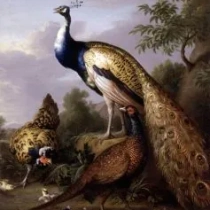Mulberry Tree
Vincent van Gogh's "Mulberry Tree" is a striking representation of the artist's distinctive style. Painted in 1889, the artwork showcases van Gogh's bold use of color and expressive brushwork. The swirling patterns and vibrant hues create a sense of movement and energy within the composition, drawing the viewer into the scene. The swirling branches of the mulberry tree seem to pulse with life, while the contrasting blue sky provides a dynamic backdrop for the natural forms. Van Gogh's treatment of the foliage is particularly noteworthy, as the thick application of paint gives the leaves a tactile quality, inviting viewers to immerse themselves in the texture of the canvas. The artist's characteristic impasto technique, with its visible brushstrokes and layered paint, adds depth and dimension to the work, further enhancing its sensory impact. Beyond its visual appeal, "Mulberry Tree" also conveys a deeper emotional resonance. Van Gogh's personal connection to nature is palpable in the painting, as he sought solace and inspiration in the natural world. The swirling motion of the branches and the exuberant colors speak to the artist's inner turmoil, reflecting both the tumultuousness of his own mind and the vitality of the natural environment that surrounded him. In "Mulberry Tree," van Gogh masterfully captures the intersection of the external world and his internal experience, inviting viewers to contemplate the beauty and complexity of the natural world through his unique artistic lens.
Overall, "Mulberry Tree" stands as a testament to van Gogh's innovative approach to color, form, and expression, offering a window into the artist's profound creative vision and his deep connection to the world around him.







No Comments Yet...